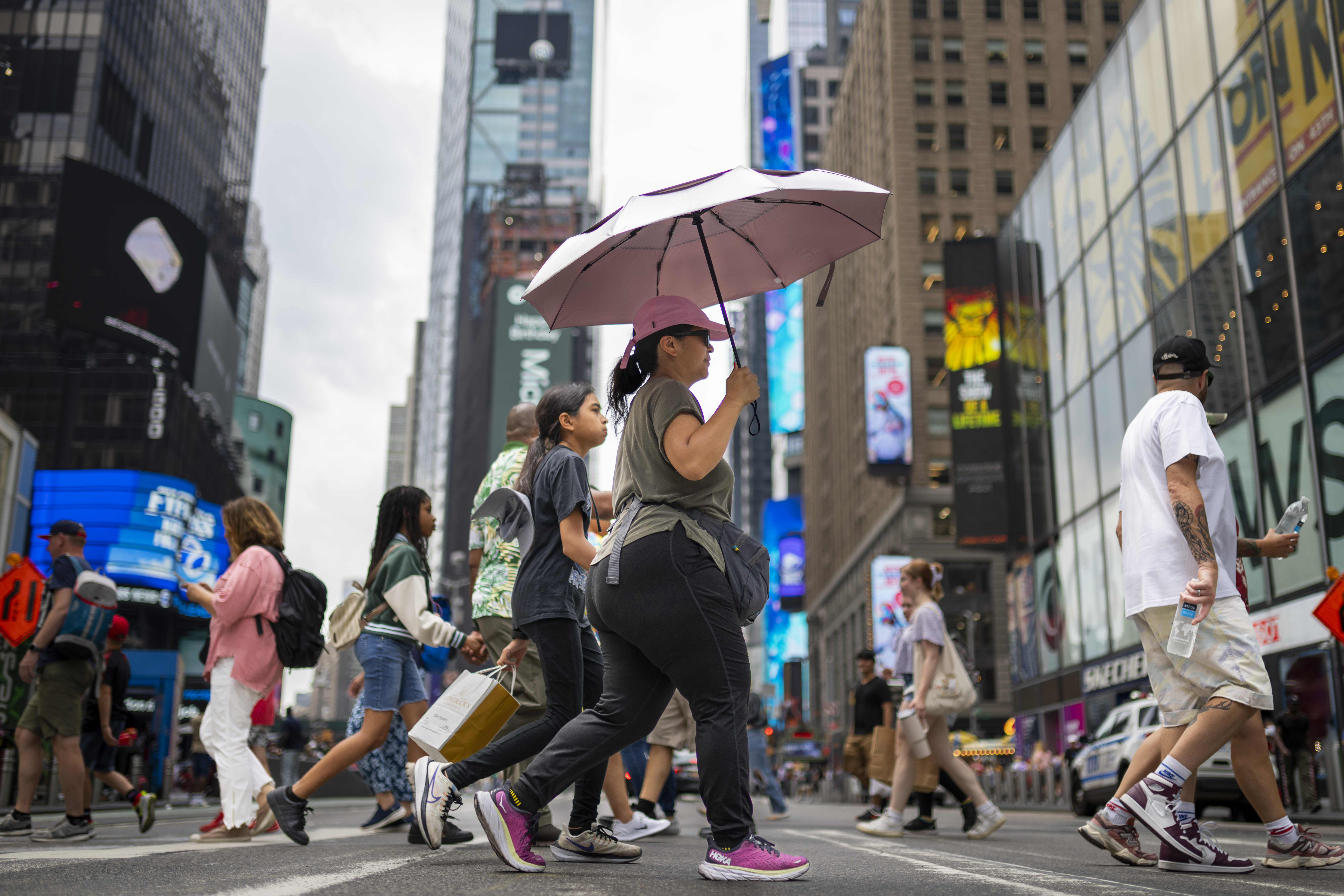
NEW YORK — More New Yorkers are heading to the emergency room for heat-related illnesses as the city bakes under a dayslong heat wave.
Hospitals across the city reported 25 heat-related emergency room visits Thursday, up from just six visits the day before and the most reported in any one day so far this summer, according to public data. Temperatures Thursday felt hotter than 100 degrees in parts of the city.
The National Weather Service had placed the entire city under an excessive heat warning, meaning temperatures could feel as hot as 105 degrees or higher. That was downgraded Friday to a heat advisory.
Heat is the leading weather-related killer and is expected to become only more deadly as climate change warms the planet. In New York City, heat-related deaths have risen over the past decade.
“This is not our first heat wave and, with climate change accelerating, it won’t be our last,” Mayor Eric Adams said at a news briefing Thursday.
Zach Iscol, commissioner of the Office of Emergency Management, said it was the first time the National Weather Service issued an excessive heat warning for the city since Aug. 13, 2021.
Each summer an estimated 350 New Yorkers die prematurely because of hot weather, according to the city’s Department of Health and Mental Hygiene. While some deaths are caused directly by heat exhaustion and hyperthermia, most heat-related deaths are the result of hot weather worsening existing chronic health conditions such as heart disease.
The fatal consequences don’t manifest equally. Low-income neighborhoods and communities of color experience higher rates of chronic conditions and are less likely to own or use an air conditioning unit. City health data shows Black New Yorkers are twice as likely to die of heat-related causes as their white counterparts.
“We are seeing a serious uptick not just in calls and concerns over heat illnesses, but in conditions themselves especially among seniors and essential workers, including delivery, hourly and shift workers who are biking in brutal heat,” Dr. Ramon Tallaj, founder of the physician network SOMOS Community Care, said in a statement.
“Remember, any extreme weather — be it wildfire smoke or intense heat — will always hit lower income communities of color harder,” he said.
Symptoms of heat illness include hot and dry skin, trouble breathing, rapid heartbeat, confusion or disorientation, dizziness and nausea and vomiting.
from Politics, Policy, Political News Top Stories https://ift.tt/Xp658QR
via IFTTT






0 comments:
Post a Comment